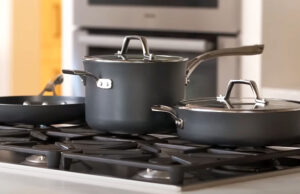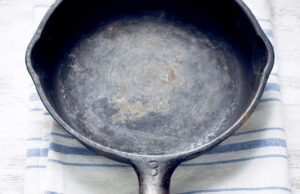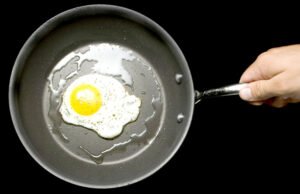As an Amazon Associate, I earn from qualifying purchases at no extra cost to you.
Whirlpool Dishwasher Fills With Water Then Stops: Fix It Fast
Have you ever turned on your Whirlpool dishwasher, and it fills with water but suddenly stops? Frustrating, right? I have faced this myself, and it can ruin your whole cleaning plan. In this article, I will show you simple ways to fix it. You can try these tips today and get your dishwasher running smoothly again.
Check the Water Supply
The first thing to do is make sure water is reaching your dishwasher properly. Sometimes the water supply valve is partially closed. If it is, your dishwasher can fill a little but then stop. Check under the sink or where your dishwasher connects to the pipe. Open the valve fully and make sure water flows freely.
Next, look at the water inlet hose. It should not be kinked or bent. Even a small bend can reduce water flow and cause the dishwasher to stop. You can remove the hose and check for blockages. Clean it carefully to make sure water passes easily.
Also, check the water pressure in your home. Low water pressure can stop the dishwasher from filling. You can test by turning on a faucet near the dishwasher. If the flow is weak, you may need to fix your home plumbing.
Sometimes, the inlet valve itself can fail. This valve controls water going into the dishwasher. If it is broken or clogged, the dishwasher fills a little then stops. You may need to replace the valve to fix the problem completely.
- Make sure water supply valve is fully open
- Check the inlet hose for bends or blockages
- Test home water pressure
- Inspect the water inlet valve for faults
Inspect the Float Switch
The float switch is an important safety part. It tells the dishwasher when enough water is inside. If the float switch is stuck or dirty, it may stop the dishwasher from filling. First, open your dishwasher and find the float. It is usually a small plastic dome on the bottom.
Gently move the float up and down. It should move freely. If it is stuck, clean around it with a damp cloth. Dirt or food particles can block its movement. Sometimes the float switch itself can fail electrically. You may need a multimeter to check if it works.
A broken float switch can make your dishwasher think it has enough water even if it does not. Replacing a faulty float switch is usually simple and affordable. Make sure you turn off power before touching electrical parts.
Also, check the float cup under the float. If water or debris fills the cup, it can stop the float from moving properly. Clean it and dry it completely before testing again.
- Locate and check the float in the dishwasher
- Make sure it moves freely without sticking
- Clean the float and float cup from debris
- Test or replace the float switch if faulty
Examine the Door Latch
A dishwasher may stop filling if the door is not closed correctly. The door latch signals the dishwasher to start. If it is loose, broken, or dirty, the machine may think the door is open. First, check the latch and clean any dirt or food.
Next, press the door firmly and listen for a click. The latch should snap in place. If it feels loose, it may need to be replaced. A faulty latch can cause the dishwasher to start, fill a little, then stop.
Also, inspect the door seal. If the seal is damaged or warped, it may prevent the latch from closing completely. Replacing a worn seal can solve filling issues.
Sometimes, the problem is electrical inside the latch. If cleaning does not work, you may need a technician to test it. But usually, cleaning and adjusting fixes the issue.
- Check the door latch for dirt and wear
- Press firmly and listen for the click
- Inspect and replace the door seal if needed
- Consider electrical testing if the latch still fails
Clean the Filter and Drain
A clogged filter or drain can prevent the dishwasher from filling and draining properly. First, remove the bottom rack and find the filter. It usually twists out easily. Take it out and rinse under running water. Use a soft brush if needed.
Check the drain area for food debris. Any blockage can stop water flow. Cleaning this regularly keeps your dishwasher healthy. Make sure the drain hose is not kinked or blocked.
Sometimes, grease or soap buildup can clog the system. You can use a dishwasher cleaner or mild vinegar to clean inside. Run a short cycle without dishes to flush out any residue.
Regular cleaning prevents problems before they become big. A simple monthly routine keeps the dishwasher filling correctly and washing dishes efficiently.
- Remove and clean the dishwasher filter
- Check the drain and drain hose for blockages
- Use mild cleaners to remove buildup
- Run a short cycle to flush residue
Test the Water Heater
The dishwasher needs warm water to run correctly. If the water is too cold, it may fill a little then stop. Check your home water heater to ensure it is set to at least 120°F (49°C). Turn on hot water in the sink to see if it is hot enough.
Also, check the dishwasher’s heating element. If it is broken, the dishwasher may not complete the fill cycle. You can test it with a multimeter or look for visible signs of damage. Replacing a broken element is simple with basic tools.
Sometimes, sediment builds up on the element, reducing its efficiency. Cleaning the element can restore proper function. Make sure to unplug the dishwasher before inspecting electrical parts.
Hot water is essential for proper cleaning. Fixing water temperature issues often solves the filling problem quickly and prevents longer-term damage.
- Ensure water heater is set correctly
- Check the dishwasher’s heating element
- Clean any sediment buildup on the element
- Replace the element if it is broken
Inspect the Control Board and Timer
The control board manages the dishwasher’s cycles. If it is faulty, the dishwasher may stop filling at the wrong time. Check for error codes on the display. Consult the manual to understand what they mean.
Sometimes, moisture or power surges can damage the board. Look for burn marks or loose connections. Replacing a control board is technical, but many homeowners can do it with care. Always turn off power before handling electrical parts.
The timer can also cause issues. Older models use a mechanical timer. If it sticks, the dishwasher may stop mid-fill. Replacing a timer often solves the problem.
A careful inspection of the control system ensures your dishwasher runs as expected. Many filling problems trace back to simple electrical issues.
- Check for error codes and consult the manual
- Inspect control board for damage or moisture
- Replace board or timer if faulty
- Always turn off power before touching electrical parts
Final Thoughts
A Whirlpool dishwasher that fills then stops is usually simple to fix. Check water supply, float, door latch, filter, heating, and control board. Many issues are small and fixable at home. Following these tips saves money and prevents frustration. A clean and properly working dishwasher makes daily life easier.
| Problem Area | What to Check | Action to Take |
|---|---|---|
| Water Supply | Valve, hose, pressure | Open valve, remove bends, fix pressure |
| Float Switch | Float movement, cup | Clean, test, replace if needed |
| Door Latch | Latch, seal | Clean, adjust, replace |
| Filter & Drain | Filter, hose, drain | Clean, remove blockages |
| Water Heater | Temperature, element | Adjust, clean, replace |
| Control Board/Timer | Electrical connections | Inspect, replace if faulty |
Frequently Asked Questions (FAQs)
Is it normal for the dishwasher to stop mid-fill?
Yes, sometimes it happens due to small issues like a stuck float or blocked hose. Dishwashers have safety sensors to prevent overflow. Checking these areas can solve the problem quickly.
Can low water pressure cause filling problems?
Absolutely. Low water pressure can stop the dishwasher mid-cycle. Test your home faucets and ensure supply lines are open. Fixing home plumbing often restores normal operation.
Do I need a technician for a float switch problem?
Not always. Many float switches can be cleaned or replaced at home. Make sure to turn off the power. Testing with a multimeter helps if you are unsure.
Is a broken door latch expensive to fix?
Usually not. Most door latches are affordable and easy to replace. Cleaning and adjusting may also solve the problem without buying new parts.
Can a clogged filter stop the dishwasher completely?
Yes. A clogged filter blocks water and prevents proper cycles. Cleaning the filter and drain regularly keeps your dishwasher running smoothly.
Do I need hot water for the dishwasher to fill?
Yes. Cold water may cause the dishwasher to fill partially and stop. Check your water heater and the dishwasher’s heating element to ensure proper function.
Is the control board often the cause of filling issues?
Sometimes. Electrical problems or moisture damage can cause the board to fail. Replacing it fixes many cycle problems, but always ensure power is off before inspecting.
Can regular maintenance prevent filling problems?
Definitely. Cleaning filters, checking hoses, and inspecting parts regularly keep the dishwasher working. Maintenance prevents minor issues from turning into bigger problems.




